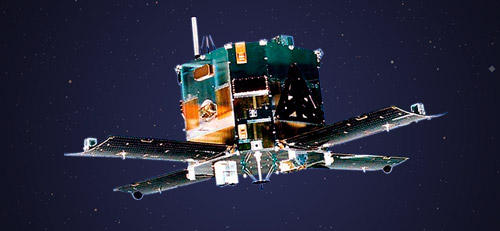| Name (pre-launch in parentheses) | GINGA (ASTRO-C) |
|---|---|
| International Designation code | 1987-012A |
| Objectives | Observation of X-ray sources in active galactic nucleus and precise observation of X-ray celestial bodies |
| Launch Date | February 5, 1987 |
| Launch Location | Kagoshima Space Center (Uchinoura) |
| Launch Vehicle | M-3SII-3 |
| Weight | 420kg |
| Shape | 1m × 1m × 1.5m Four solar paddles |
| Orbit Altitude | Perigee 530km, Apogee 595km |
| Orbit Inclination | 31° |
| Type of orbit | Near circular |
| Period | 96min. |
| Scientific Instruments | Scientific Instruments Large Area Counter (LAC) All-Sky Monitor (ASM) Gamma-ray Burst Detector (GBD) (LAC was developed by international cooperation with the University of Leicester in the UK and with the Los Alamos National Laboratory in the U.S.A.) |
| End of Operation | November 1, 1991 |
| Reentered Date | November 1, 1991 |
| Operation | It was originally planned that GINGA’s attitude control would be performed automatically by the onboard star sensor. In orbit, however, automatic identification of a star proved to be difficult and so attitude control was performed using gyro data only. |
| Results | After the launch, a supernova emerged in the Great Magellan Cloud on February 23, the first time in four centuries. In August, GINGA successfully observed cosmic X-rays emitted from the supernova. The satellite also discovered and observed supernova remnants, high-temperature plasma inside dark nebula, a flare that occurred in the binary system, variations in the Seyfert Galaxy's nucleus, spectra of quasars, etc. |



